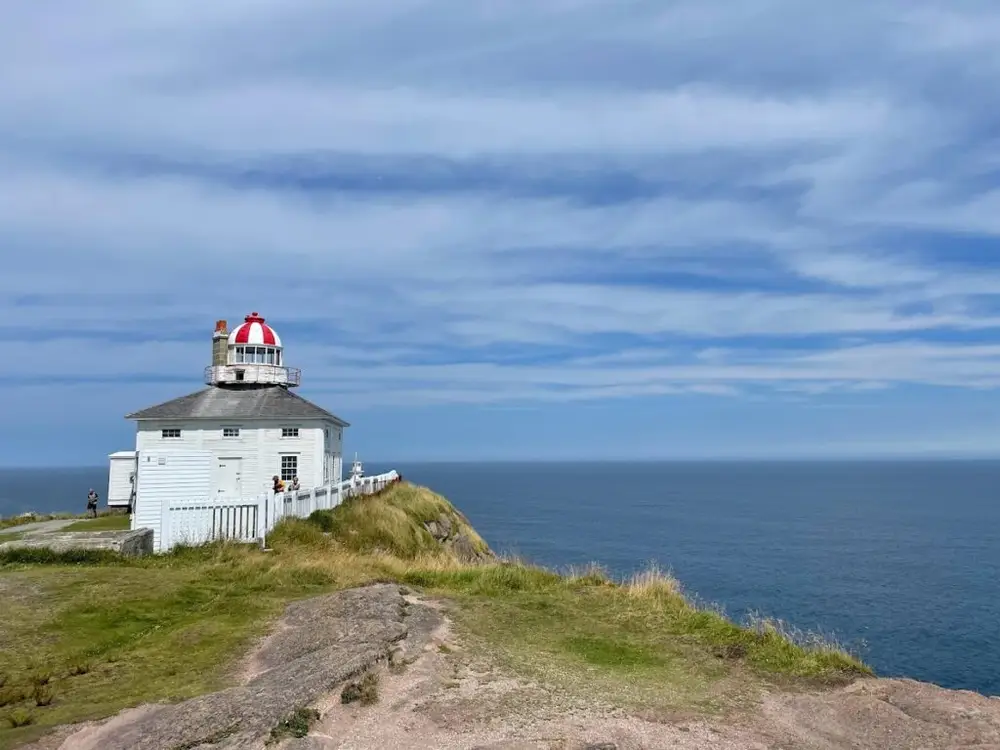Day 6 was supposed to be our last, and we had a long day ahead of us. Before breakfast, we took a short walk around St. Shotts, making our way down to the ocean. That’s when we spotted something bobbing in the water. At first, it looked like a floating ball, but as we got closer, we realized it was a sea lion. He was shy, constantly diving in and out of the water, making it impossible to get a decent picture. But watching him in his natural habitat was a great way to start the day.

After breakfast, we continued along the Irish Loop. While planning the trip, I had considered stopping at Mistaken Point Ecological Reserve, a UNESCO World Heritage Site home to some of the oldest large fossils on Earth. According to UNESCO:
“Of deep marine origin, these cliffs date to the Ediacaran Period (580-560 million years ago), representing the oldest known assemblages of large fossils anywhere. These fossils illustrate a watershed in the history of life on earth: the appearance of large, biologically complex organisms, after almost three billion years of micro-dominated evolution.”
However, the site requires advanced booking for a guided tour at a specific time, and considering our already packed day and my limited enthusiasm for fossils, I decided to skip it.
Instead, we made a series of scenic stops at lighthouses and viewpoints.
Our first stop was Ferryland Lighthouse, where you can book a picnic lunch, but we opted for a short hike from the parking lot to the lighthouse to take in the ocean views.
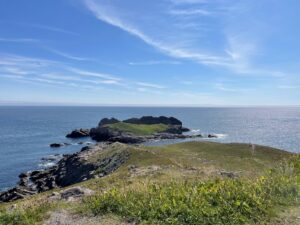
Afterward, we made a quick stop in the town of Ferryland for a restroom break and to browse a local store. Just as we arrived, a bus full of seniors pulled in—at least 30 of them! I don’t think I’d ever seen that many seniors in one place at once.
Next, we stopped at the “One Million Dollar View” Restaurant for ice cream. The ice cream itself was nothing extraordinary, but the name of the restaurant was spot on.
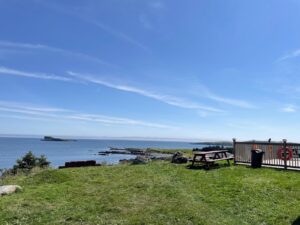
Then, we visited a small local craft store. Since day one, I had been regretting not picking up souvenirs at our first stop, and I was still on a mission to find a real fishing float and some bakeapple jam. Once again, I left empty-handed—until, just as we were about to leave, the store owner asked if we were looking for something specific. I told him about my fishing float quest, and he told me to wait a minute. He ran into his garage and came back with two real fishing floats. For a moment, I thought he might just give them to me for free, but that didn’t seem fair, so I handed him $10.
Our next stop was Cape Spear Lighthouse, and out of all the lighthouses on the island, this one was probably my favorite. Perched at the most easterly point in Canada, Cape Spear Lighthouse is the oldest surviving lighthouse in Newfoundland and Labrador. The site also holds the remnants of Fort Cape Spear, a Second World War coastal defense battery. The trails and viewpoints here were spectacular, and I spent about an hour soaking it all in. I think some of my best Newfoundland photos were taken here. Whenever I think back to Newfoundland, this is the place that comes to mind first.
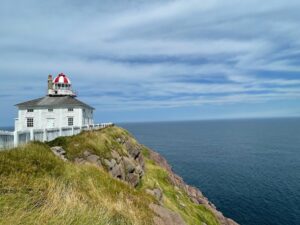

After exploring Cape Spear, we made a quick visit to Petty Harbour, a charming fishing village just 10 minutes away. We wandered around, taking in the quiet atmosphere before stopping at a local shop. Inside, we found some interesting Newfoundland delicacies—cod tongues, seal meat, and moose meat. I’m not a vegetarian, but something about eating seal or moose just didn’t appeal to me, so I passed on those.

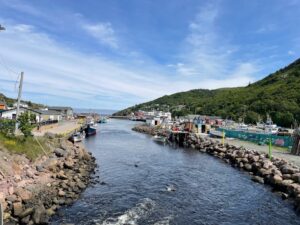

Finally, we reached St. John’s. To get a panoramic view of the city, we headed to Signal Hill. Beyond offering an excellent overlook of the harbor and city, Signal Hill is historically significant—this is where, in 1901, Guglielmo Marconi received the first transatlantic wireless transmission.

Before heading downtown, we made a stop at Quidi Vidi, a picturesque neighborhood within the city. With its traditional Newfoundland architecture and breathtaking coastal setting, it’s no surprise that Quidi Vidi is one of the most photographed areas in Newfoundland and Labrador.
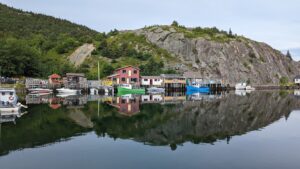
Downtown St. John’s is a vibrant patchwork of color. Rows upon rows of brightly painted houses line the steep streets, each seemingly competing to be the boldest or most original shade. These colorful homes are one of the city’s most distinctive features, making it instantly recognizable. We wandered up and down the hilly streets for a while until our energy was completely drained.
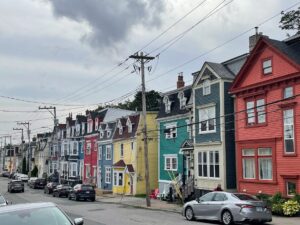
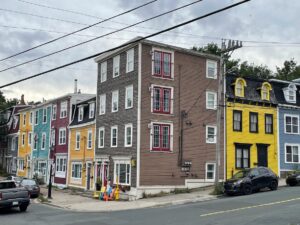
But there was still one must-do left on our list: the Screech-In Ceremony. This Newfoundland tradition welcomes non-Newfoundlanders as honorary “Newfies” through a initiation involving a shot of screech (a local rum), a short recitation, and kissing a cod.
To take part, we headed to Trapper John’s, one of the best-known spots for a Screech-In. The ceremony was a fan and awkward experience, but in the end, I got my official certificate, confirming that I had been “Screeched In” and was now an honorary Newfoundlander.
When we finally arrived at our hotel, completely exhausted, we were met with an unpleasant surprise—our booking was nowhere to be found in the system. Despite having a reservation confirmation, there was no record of us, and to make matters worse, the hotel was fully booked. With a some event happening in the city, finding another hotel at the last minute would have been nearly impossible.
Lucky for us a nice hotel manager went above and beyond to help us. After some back and forth, they miraculously found a room for us. Haven!
Even though I was sad that our trip was coming to an end, and we were exhausted, I wasn’t quite ready to call it a night. I wanted one last look at the ocean. So after dinner, we made a final drive to Topsail Beach to catch the sunset.
We arrived a little late for the sunset itself, but the place still had a magical atmosphere. Groups of people were scattered along the shore, sitting around campfires, playing guitars, chatting, and roasting marshmallows. No better place to be on a summer night at dusk.

